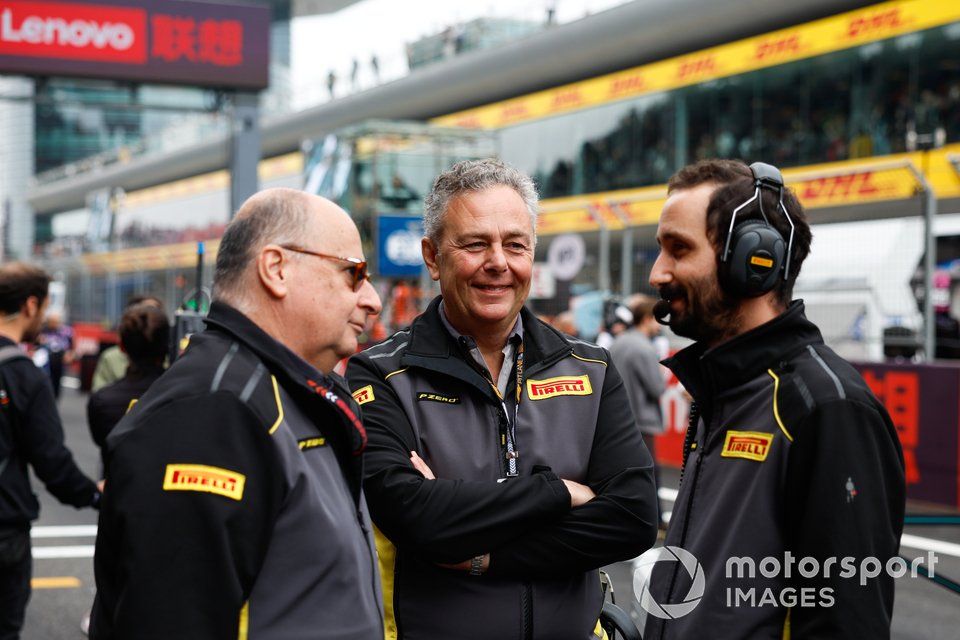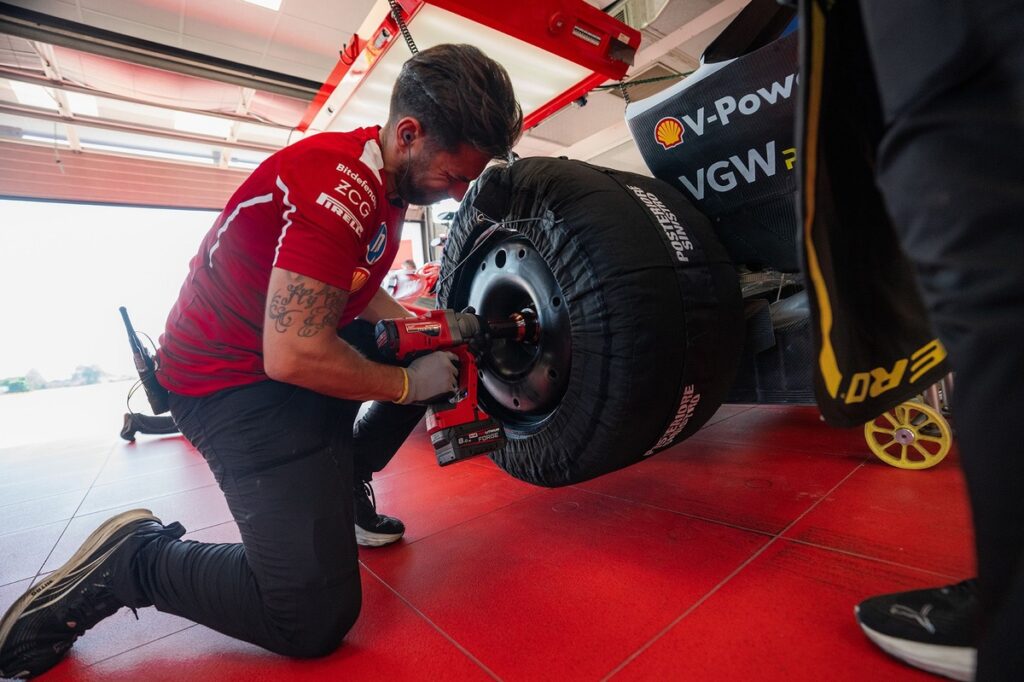The 2026 revolution in Formula 1 doesn’t just involve new cars and a different engine formula. It also includes an entirely new generation of tyres – an element that plays a crucial role in modern F1.
Initially, the FIA wanted to switch to 16-inch for 2026 to reduce weight, but sole tyre supplier Pirelli opposed this for several reasons, including road relevance.
As a result, F1 will stick with 18-inch tyres, but the new wheels will be narrower and have a slightly smaller diameter as well, which should still contribute to weight savings in 2026.
Mule cars not fully representative of F1 2026 machinery
Next year’s tyres will feature an all-new construction and new compounds. Extensive testing is in full swing, most recently with Aston Martin and Sauber at Silverstone.
However, it’s a complicated process, as Pirelli can’t test its new tyres on 2026-spec cars and has to rely on “mule cars” – modified cars under the current set of regulations that are adapted to simulate the 2026 characteristics.
Pirelli admits they are not truly representative of next year, and as such, developing the new 2026 tyres is to some extent a leap into the unknown.
Gabriel Bortoleto, Sauber, Pirelli test Silverstone
Photo by: Pirelli
“I’m satisfied with the development so far, but of course, there are a lot of question marks,” Mario Isola, head of Pirelli Motorsport, told Autosport.
“First of all, that’s related to the car. We are using mule cars. Teams are doing a good job in trying to give us a car that is as representative as possible, but they are still current cars.
“It means they are cars with a different aero package and a different level of downforce as well. Actually, we estimate that the downforce they are generating is higher compared to what we’ll have next year.
“This means that it’s a bit difficult for us to have a range of compounds that is perfectly centred across the performance of the car.
“If the car is stressing the tyres more or less compared to what you expect, then of course there’s a risk to go too aggressive or too conservative with the tyres, because you don’t have a clear idea on what you will find in 2026.”
Still, Isola sees reason for optimism based on past experience: “In 2021, when we were developing the 18-inch tyre, and it was working quite well in 2022.

Mario Isola, Racing Manager, Pirelli Motorsport, on the grid
Photo by: Steven Tee / Motorsport Images
“During the first year with the new cars, we didn’t find any major changes that were needed on the tyres.”
“Obviously, fine-tunings are always necessary, so I’m still expecting a tyre in 2027 that is different from the one in 2026,” added Isola, expecting there to be a better understanding of the new regulations once they are in effect for a year.
A calculated guess for 2026?
Until then, Pirelli must to some extent make a calculated guess based on various parameters and sources of information that it can look it. The mule cars are one of them, but can’t be trusted as an absolute benchmark.
“We cannot just rely on our tests with the mule cars,” added Isola. “We need to cross all the information that is coming from the track with simulations from the teams, what their simulators say about 2026, our virtual model and a thermomechanical model of the tyres.
“So, it’s quite a lot of work together with our modelling department, R&D, the testing department, material department and many more elements.
“We’ve also found differences between the mule cars, each team is preparing a mule car in a different way.”
Lando Norris, McLaren during Pirelli test
Photo by: Pirelli
To simulate the reduced downforce levels of 2026, teams run significantly less wing than they normally would on a given track – but that’s not the only adjustment for the tests.
“No, it’s not just about the wings,” said Isola, “because they have to change the ride height as well, given the new tyres are lower in diameter.
“So, they made some modifications to the cars that are allowed by the FIA in order to give us the most representative mule cars.
“But as I said, we still found differences across the teams. It’s useful for us to test with all the teams to get a complete picture and also to get a good idea about the differences across all mule cars.
“But to return to your initial question: overall, we’re quite happy with the progress, and we believe that we can have a well-balanced product in 2026.”
Testing of the 2026 tyres will continue on 5-6 August at the Hungaroring, followed by additional sessions in Monza, Mugello, and Mexico City.
In this article
Be the first to know and subscribe for real-time news email updates on these topics
Subscribe to news alerts
Read the full article here

